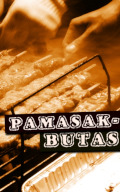Pamasak-Butas: Preliminary Thoughts · 3:00pm Dec 20th, 2019
So a blog post may be necessary to flesh out some things regarding Pamasak-Butas, particularly because I acknowledge that the setting isn't typical Earth-meets-Equestria fare. A warning: This contains spoilers for those who haven't read the first chapter of the story.

PH Bronies OC - Pearl Shine #27 by jhayarr23
If you don't know what the Philippines is, it's a country in South-East Asia. Yes, we're the bunch of islands under Taiwan and over Malaysia and Indonesia. You may know it for its abundance of mangoes, its Fear Factor-esque food like that pork blood dish called dinuguan, its recent spate of human rights abuses/violations, or its beautiful landmarks like the Ifugao Rice Terraces.
The city the story takes place in is Metro Manila, the nation's capital region. The closest American analogue I remember is Los Angeles as opposed to New York: there's not much of a definite center aside from the official capital district of Manila (yes, we also have a Manila in Manila like a London in London). It's home to, well, lots of things. As for something related to Friendship is Magic, Pasig City is home to Top Draw Animation Studio, a secondary animation studio that worked with the show from Season 2 onward and housed about four-fifths of the 2017 movie's animation work. (While searching up some more on it, I got the feeling that it may not exactly have the best working environment, though.)
Now there are two things that need clearing up: jeepneys and street food.
First, the jeepneys.

Barya lang po sa umaga by contrail09
They're the most famous form of public transportation in the country. They started out as repurposed American military jeeps after the end of World War II before switching to vehicles custom-made for the job. Most of them are now made by Sarao Motors; it's rare to see a non-Sarao jeep these days.
Jeeps are very useful because they're the cheapest way to commute. As of writing, the minimum fare is eight pesos which is equivalent to less than half a US dollar (also as of writing). We have taxis but they're quite expensive, and, up until recently, almost all buses were also like that. We also have rail systems but our ground commuter rail is decent at best and and our rapid transit rail merely does its job; nothing too fancy about it—also, railway stations are a common jeepney stop anyway.
Riding a jeepney, especially during the rush hours (which are early in the morning as people go to work and early afternoon-into-sunset as people go home from work), is a testament to regular Philippine life, considering its ingrained into the lives of tens of millions. Seated while being squished by the people on both left and right, being inches away from the people on the other side of the vehicle—loud low-fi music, front seat banter, and aggressive driving are optional but common.
Jeeps are also a form of art. They're very colorful and many of them have paintings of various subjects such as Catholic imagery, various animals, the drivers' children, and famous faces both real and fictional. However, it's still common to see the simple jeep with nothing but commute info painted on them.

Jeepneys by Gary Todd, on Flickr
Ah, and we also have tricycles. Transportation for one or few passengers and costs more than a typical jeepney ride, but they're convenient for when you have baggage and can't walk a short distance comfortably. They can also go beyond the main roads which many jeeps adhere to closely: though jeepney routes can cross through secondary roads, they're usually fixed like those inflexible bus routes.

Traffic Laoag. Ilocos Norte. by Bernard Spragg. NZ, on Flickr
The second one is street food.

B. Marcelino by Brian Evans, on Flickr. Distributed under the CC BY-ND 2.0 license.
Philippine street food is an umbrella term for many things. There's barbecue, buko (young coconut) juice, taho (a food/drink that consists of tofu, sweetener, and those edible pearls), ice cream (particularly sorbetes which uses carabao [water buffalo] milk), and so on.
However, the food cart in this story contains some bites that, honestly, I've particularly liked throughout my life.
- Fishballs, made of fish paste. One of the cheapest foods you'll find in the country if not the world. They taste a bit like starch and then a bit like fish.
- Squidballs, made of squid purée. The more luxurious brother of the fishball, it tastes juicier but is more expensive.
- Kikiam, thin wraps of bean curd surrounding pork and veggies. For some reason, I hated them when I was a kid; it was only this year that I started liking them when I gave them a try after more than a decade.
- Kwek-kwek, quail eggs fried in orange batter. A cholesterol nightmare, but they're best dipped in vinegar for that perfect crunchy/soggy balance. And now I'm craving for them while writing this (hehe!)
- Siomai (also known internationally as shumai or siumai), which is the local version of the Chinese dimsum/dumpling.
- Calamares, which is honestly not that common around here but it's an intermittent trend.
It's one thing that makes Manila and other cities a like New York: they have hotdog stands, we have food carts of this stuff and more.
That's it for now. My afterthoughts, which are my full (or as full as can be) thoughts on the story, will be posted along with the fourth and last chapter.






We all have foods like that. (Though sometimes you eat them a decade later and you still hate them. )
)
Thanks for the background info!
5172568
It was most probably because, back then, I tried it at the local school cafeteria which, in hindsight, may not exactly be the best place for street food; there, it tasted like sweet meat, which didn't mesh well with my young tastes. This year, I tried it on the street for the first time and it was a much better experience: tasted like actual savory meat.
And, you're welcome!